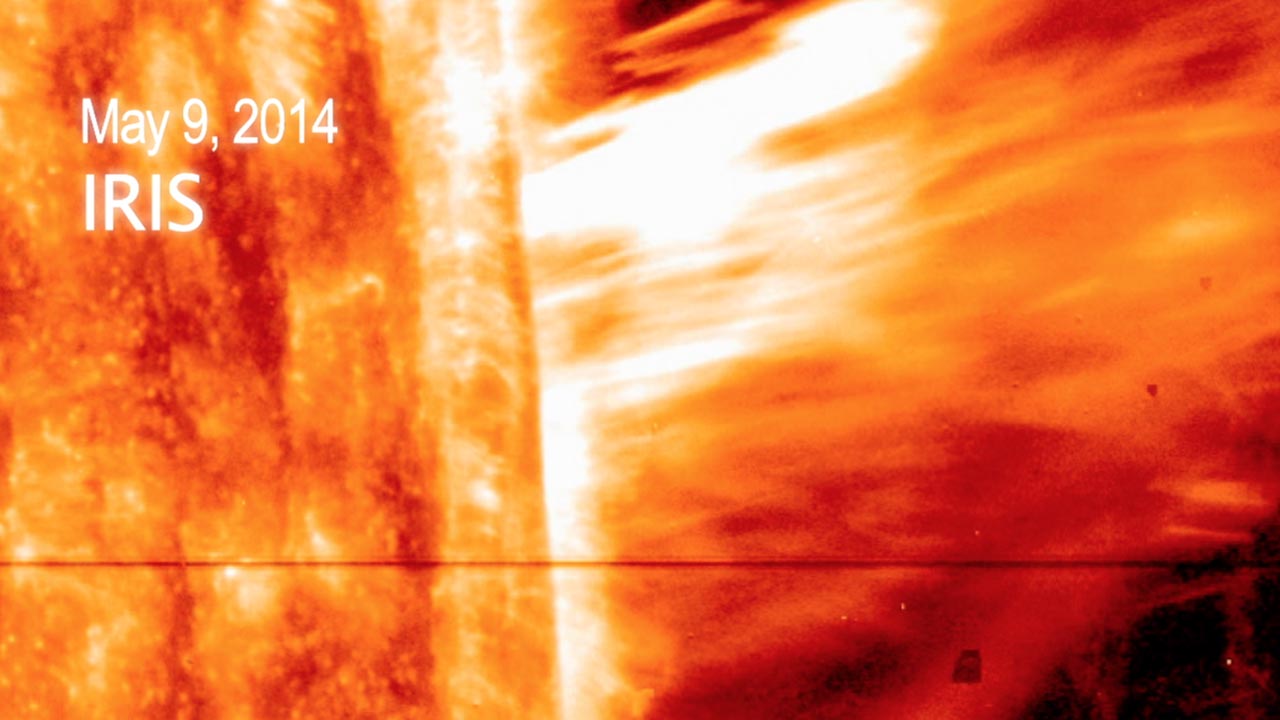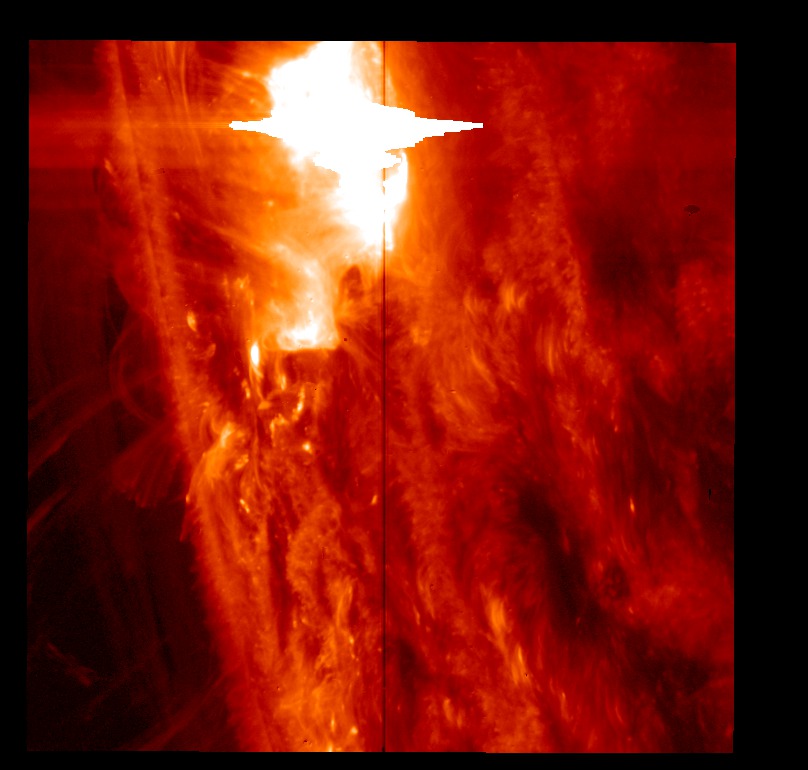IRIS close-up of a solar flare
The Slit-Jaw Imager (SJI) aboard IRIS (Interface Region Imaging Spectrograph) observes a tiny region of the Sun at an image resolution (0.166 arc-seconds per pixel) almost four times higher than the Solar Dynamics Observatory (SDO) (0.6 arc-seconds per pixel). In addition, IRIS has a narrow slit in the imaging plane (the thin, dark vertical line in the center of the inset) which directs some of the light to a spectrograph which allows solar physicists to determine velocity and temperature of the solar plasma.
In this zoom-in from a full-disk view of the Sun from SDO, the imager is observering the Sun at a wavelength of 133nm (1330 angstroms). The imager field-of-view is moved across the solar disk in four steps, allowing the slit to pass over different regions of the Sun to determine the properties of the plasma.
Note: IRIS and SDO are in very different orbits. You can see samples of the orbits at The 2013 Earth-Orbiting Heliophysics Fleet. IRIS is in a near-Earth orbit, while SDO is much higher at geosynchronous orbit. This difference in camera location creates a small parallax between the images composited from these two cameras.
Zoom in combining SDO imagery at 17.1 nm and IRIS/SJI at 133nm.
Zoom in combining SDO imagery at 30.4 nm and IRIS/SJI at 133nm.
Zoom in combining SDO imagery at 160 nm and IRIS/SJI at 133nm.
Credits
Please give credit for this item to:
NASA's Scientific Visualization Studio
-
Animator
- Tom Bridgman (Global Science and Technology, Inc.)
-
Producer
- Genna Duberstein (USRA)
-
Scientists
- Bart De Pontieu (Lockheed Martin Solar and Astrophysics Lab)
- Adrian Daw (NASA/GSFC)
-
Project support
- Laurence Schuler (ADNET Systems, Inc.)
- Ian Jones (ADNET Systems, Inc.)
-
Writer
- Karen Fox (ADNET Systems, Inc.)
Missions
This page is related to the following missions:Datasets used
-
AIA 304 (304 Filter) [SDO: AIA]
ID: 677This dataset can be found at: http://jsoc.stanford.edu/
See all pages that use this dataset -
AIA 171 (171 Filter) [SDO: AIA]
ID: 680This dataset can be found at: http://jsoc.stanford.edu/
See all pages that use this dataset -
AIA 1600 (1600 Filter) [SDO: AIA]
ID: 757This dataset can be found at: http://jsoc.stanford.edu/
See all pages that use this dataset -
Slit-Jaw Imager (SJI) [IRIS: Imager]
ID: 816This dataset can be found at: https://iris.lmsal.com/data.html
See all pages that use this dataset
Note: While we identify the data sets used on this page, we do not store any further details, nor the data sets themselves on our site.
Release date
This page was originally published on Friday, February 21, 2014.
This page was last updated on Wednesday, May 3, 2023 at 1:51 PM EDT.


